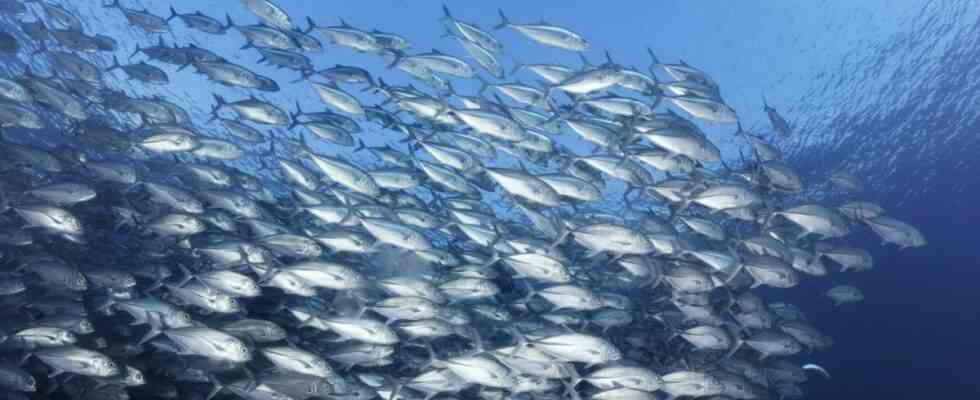Fish can create considerable turbulence in coastal waters and mix up the water layers like a storm. Researchers observed this in nocturnal spawning of anchovies in a bay on the Iberian Peninsula. The “biomixing” is probably of greater importance for the ecology of coastal waters than previously assumed, write the researchers in the journal NatureGeoscience.
The water in the oceans is stratified from the surface to the bottom: the water at the top is warmer and less dense than at greater depths. In their study, the scientists working with Bieito Fernández Castro from the University of Southampton write that wind and the tides are the main forces that mix the water in the oceans. Nutrients, oxygen, heat and also pollutants are distributed over the water column. The mixing thus has a significant impact on the ecosystem.
The researchers continue to write that there has long been a discussion as to whether floating organisms – from tiny zooplankton to fish to large marine mammals – could also generate substantial turbulence, at least at a regional level. However, measurements for this are extremely difficult, for example because you have to be in the right place at the right time. Previous results indicated that the effect is small at best.
Fernández Castro and his team had now taken measurements in the Ría de Pontevedra Bay in north-eastern Spain for a total of 15 days. They determined the temperature and flow of the water at different water depths. Every night they registered significant turbulence in this way – although there were no strong winds. Acoustic signals indicated that a large school of fish had been in the vicinity of the measuring devices. And indeed, when taking samples, the scientists finally took anchovy eggs out of the water.
The turbulence was created by the fish spawning, the researchers conclude. “Previous studies suggest that biological turbulence causes little mixing because the circular motions of the water that the fish create while swimming are too small,” explains Fernández Castro. “This is certainly true in the open ocean, where temperature variations occur over tens of meters. However, we have shown that close to land, where the layers vary over a much shorter distance, the anchovies are able to mix them.”
The special local conditions probably played an important role: “We believe that the biological mixing was strong in our observations because the bay is highly stratified – the temperature and other properties vary significantly at different depths.” While biomixing probably does not play a major role in the open sea, it is of considerable importance for coastal ecosystems.

